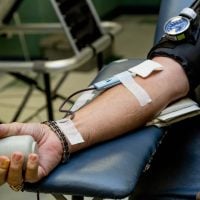Gender-based violence (GBV) is a pervasive issue that transcends geographical, cultural, and socio-economic boundaries. It encompasses a range of harmful behaviors directed at individuals based on their gender, with women and girls disproportionately affected. GBV manifests in various forms, including physical, sexual, emotional, and economic abuse, and can occur in both public and private spheres.
The World Health Organization estimates that one in three women worldwide has experienced either physical or sexual violence in their lifetime, highlighting the urgent need for comprehensive strategies to combat this global epidemic. The roots of gender-based violence are deeply embedded in societal norms and power imbalances that perpetuate discrimination against marginalized groups. Addressing GBV requires a multifaceted approach that not only provides immediate support to survivors but also tackles the underlying causes of violence.
This includes promoting gender equality, empowering women and girls, and fostering community engagement to challenge harmful stereotypes. As awareness of GBV grows, so does the recognition of the critical role that donor agencies play in funding initiatives aimed at prevention and response.
The Importance of Donor Agencies in Gender-Based Violence Prevention
Financial Support for Innovative Programs
These agencies have the capacity to mobilize significant funding, which can be directed toward innovative programs that address the complexities of GBV. By investing in prevention strategies, donor agencies help create safer environments for vulnerable populations and contribute to long-term societal change.
Fostering Collaboration and Partnerships
Moreover, donor agencies often facilitate collaboration among various stakeholders, including governments, non-governmental organizations (NGOs), and community-based groups. This collaborative approach is vital for developing comprehensive solutions that address the multifaceted nature of GBV. By fostering partnerships and encouraging knowledge sharing, donor agencies enhance the effectiveness of interventions and ensure that resources are utilized efficiently.
Amplifying Voices and Holding Governments Accountable
Their involvement not only amplifies the voices of those affected by GBV but also holds governments accountable for their commitments to gender equality and human rights.
Overview of 20 Donor Agencies Supporting Gender-Based Violence Prevention
Numerous donor agencies are dedicated to supporting initiatives aimed at preventing gender-based violence. These organizations vary in size, scope, and focus areas, but all share a commitment to addressing this critical issue. Some of the most prominent donor agencies include: 1.
United Nations Women: This UN entity is dedicated to gender equality and the empowerment of women, providing funding for programs that combat GBV globally.
2. The Global Fund for Women: This organization supports grassroots women’s organizations working to end violence against women and girls.
3. The European Union: Through various funding mechanisms, the EU supports projects aimed at preventing GBV within its member states and beyond.
4.
USAID: The United States Agency for International Development funds programs that address GBV as part of its broader commitment to global health and development.
5. The Ford Foundation: This philanthropic organization invests in initiatives that promote social justice, including efforts to combat GBV.
6. The Open Society Foundations: Focused on human rights, this foundation supports projects that address systemic issues related to GBV.
7.
The World Bank: Through its funding programs, the World Bank addresses the economic impacts of GBV and supports initiatives aimed at prevention.
8. The Packard Foundation: This foundation funds projects that empower women and girls, including those focused on preventing GBV.
9. The NoVo Foundation: Committed to advancing social justice, this foundation supports initiatives aimed at ending violence against women and girls.
10.
The UN Population Fund (UNFPA): UNFPA provides funding for programs that address reproductive health and rights, including efforts to combat GBV.
11. The International Rescue Committee (IRC): The IRC supports programs that provide critical services to survivors of GBV in crisis-affected areas.
12. The Global Fund: This international financing institution supports health initiatives, including those addressing the health consequences of GBV.
13.
The Bill & Melinda Gates Foundation: This foundation funds initiatives aimed at improving women’s health and rights, including efforts to prevent GBV.
14. The Australian Department of Foreign Affairs and Trade: This agency funds programs aimed at preventing violence against women in the Asia-Pacific region.
15. The Canadian International Development Agency (CIDA): CIDA supports initiatives that address GBV as part of its commitment to gender equality.
16.
The Norwegian Agency for Development Cooperation (Norad): Norad funds projects aimed at preventing violence against women and girls globally.
17. The Swedish International Development Cooperation Agency (Sida): Sida supports initiatives focused on gender equality and the prevention of GBV.
18. The UK Department for International Development (DFID): DFID funds programs aimed at addressing GBV as part of its broader development agenda.
19.
The International Women’s Health Coalition: This organization supports initiatives that promote women’s health and rights, including efforts to combat GBV.
20. The Global Partnership for Education: This partnership funds education initiatives that address issues related to gender-based violence in schools. These donor agencies play a crucial role in funding innovative programs that address the root causes of GBV while providing essential support services for survivors.
Impact and Success Stories of Donor Agency Support
The impact of donor agency support on gender-based violence prevention is evident through numerous success stories from around the world. For instance, a project funded by UN Women in South Africa successfully implemented community-based interventions that engaged men as allies in preventing violence against women. By fostering dialogue around masculinity and promoting healthy relationships, this initiative led to a significant reduction in reported cases of domestic violence within participating communities.
Another notable example comes from the Global Fund for Women, which has supported grassroots organizations in India working to empower women through education and economic opportunities. By providing training and resources, these organizations have enabled women to assert their rights and challenge societal norms that perpetuate violence. As a result, many women have reported increased confidence in seeking help and reporting incidents of abuse.
These success stories illustrate how targeted funding can lead to transformative change within communities. By investing in prevention strategies and supporting survivor services, donor agencies contribute to building a more equitable society where individuals can live free from violence.
Challenges and Future Directions in Gender-Based Violence Prevention
Despite the progress made through donor agency support, significant challenges remain in the fight against gender-based violence. One major obstacle is the persistent stigma surrounding survivors of GBV, which often discourages individuals from seeking help or reporting incidents. Additionally, many communities lack access to essential services such as legal aid, healthcare, and counseling, further complicating efforts to address GBV effectively.
Moreover, funding for GBV prevention initiatives can be inconsistent and often depends on shifting political priorities or economic conditions. This unpredictability can hinder long-term planning for organizations working on the ground, making it difficult to sustain impactful programs over time. Looking ahead, it is crucial for donor agencies to adopt a more holistic approach to funding gender-based violence prevention initiatives.
This includes not only providing financial resources but also fostering collaboration among stakeholders and investing in capacity-building efforts for local organizations. By prioritizing sustainable solutions that address the root causes of GBV, donor agencies can help create lasting change.
How Individuals and Organizations Can Get Involved in Gender-Based Violence Prevention
Individuals and organizations can play a vital role in preventing gender-based violence by supporting initiatives that promote awareness, education, and advocacy. One effective way to get involved is by volunteering with local NGOs that focus on GBV prevention or survivor support services. These organizations often rely on dedicated volunteers to help with outreach efforts, educational programs, or direct services for survivors.
Additionally, individuals can advocate for policy changes at local or national levels by engaging with lawmakers and raising awareness about the importance of addressing GBV. This can involve participating in campaigns, signing petitions, or attending community meetings focused on gender equality issues. Organizations can also contribute by integrating gender-based violence prevention into their programming or corporate social responsibility initiatives.
This could involve providing training for employees on recognizing and responding to signs of abuse or partnering with local NGOs to support awareness campaigns. In conclusion, addressing gender-based violence requires a collective effort from all sectors of society. By understanding the importance of donor agency support and actively engaging in prevention efforts, individuals and organizations can contribute to creating a world where everyone can live free from violence and discrimination.









































